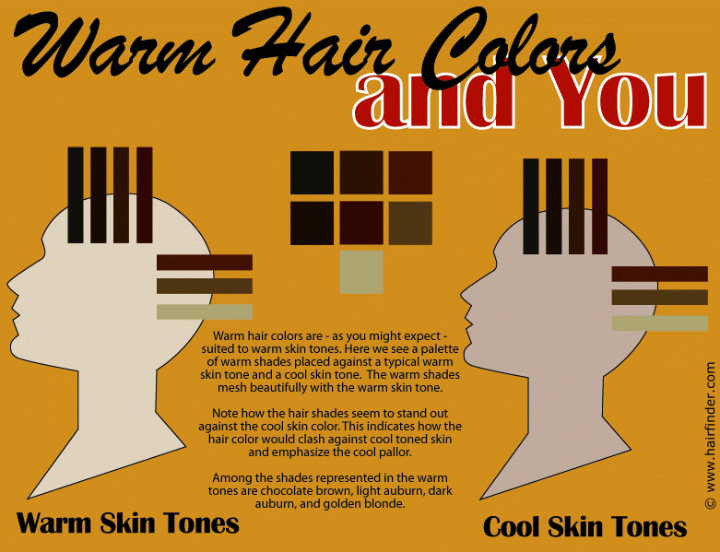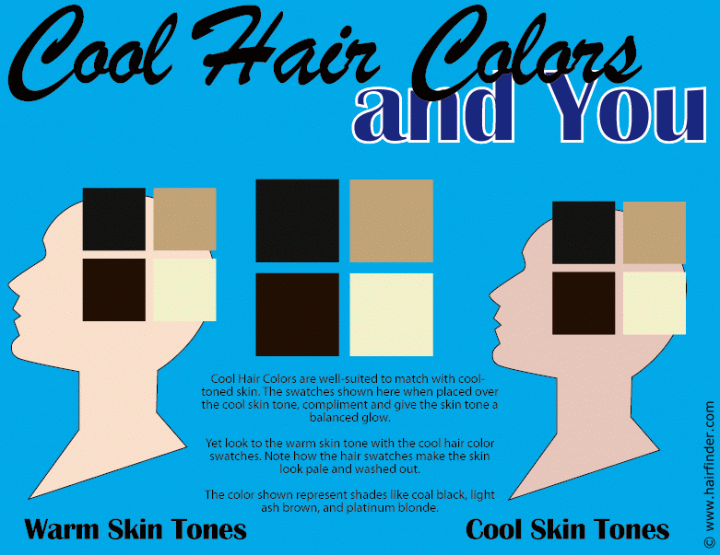Cool and Warm Hair Colors (2)

Previous page
Why It’s Important:
Some people have asked me why they have to worry about the color palettes at all, since the purpose of hair color is to change the natural color to the desired color. There are actually two major reasons to choose from the proper color palette: potential color conflicts with skin tone, and potential negative color outcomes.
When someone with a warm skin tone uses hair color that is of a cool palette (and vice versa), the two palettes can create conflict depending on the specifics of the skin tone.
But by keeping to a warm color palette and choosing light auburn, or chocolate brown, or even golden blonde, the ruddy complexion seems balanced and the whole becomes pleasant.
In the reverse case, if a person with a cool complexion chooses a warm skin tone, such as if one with pale ivory skin selected a red shade, or even strawberry blonde. The skin would appear more sallow and washed out. It takes the cool shades to allow the tones of cool-complexioned skin to be asserted.
Similar issues arise with the darker skin tones of both cool and warm palettes, with the opposing color palettes for hair color bringing out the worst parts of each skin tone and shade.

As mentioned, the other reason that choosing the right color palette is important has to do with the potential for negative color results. Just like the hair color you apply to change the color of your hair. Your natural hair color has a base pigment, and that base generally fits into the color palette you have already established.
So, say that you have dark brown hair that has a bluish-drab base pigment so it is in the cool palette, but you want to go blonder, and you select a blonde you like, only the base color of the hair color is gold/yellow. The problem you are likely to encounter is that the resulting color will be greenish.
Of course, we’ve covered the subject of color correction before, and in the case of green results, you’d need another "warm" tone to correct it, namely a red-based color. However, that gets into balancing the tones, which is a slightly different topic. As far as basics go, keeping your color choices within the same family as your natural color can help you avoid many of the issues.
©Hairfinder.com
See also:
Look younger with the right hair color for your skin tone
Hair colors and our color palette
The relation between our hair, skin and clothes color
The hair color wheel and how to use it